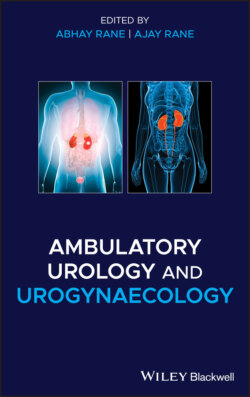Читать книгу Ambulatory Urology and Urogynaecology - Группа авторов - Страница 20
Intermediate Recovery: Discharge Criteria
ОглавлениеThere is an increasing pressure for rapid discharge of patients. However, this must be balanced with the risks associated with premature discharge, including readmission, complications, and legal consequences. Several scoring systems exist, guiding clinicians about safe discharge. The Post Anaesthesia Discharge Scoring System (PADS) (Chung 1995) is one utilised example and includes observations, patient orientation, bleeding, and post‐operative symptoms including pain and nausea. Post‐operative voiding and tolerance of oral intake are also included in this scoring system.
The type of anaesthesia and surgery can be a determinant of post‐operative voiding function. Specific to pelvic‐floor procedures is the effect of anaesthesia on bladder function. The insertion of the mid‐urethral sling has been performed under both regional and local anaesthetic, with regional anaesthesia having been found to increase the rates of post‐operative urinary retention (Adjusted OR = 4.4, 95% CI 1.9, 10.2) (Wohlrab 2009), a factor that could influence length of stay. A systematic review looking at the effect of anaesthesia on bladder function, found the dose of intrathecal local anaesthetic used with regional anaesthetic, as well as the potency of the anaesthetic used, to correlate with the duration of bladder dysfunction (Choi 2012). Encouragingly, a retrospective review of 119 patients who were discharged the same day as undergoing outpatient tension‐free vaginal tape (TVT) surgeries found no significant difference in the need for catheterization among patients who received spinal anaesthesia compared to those who received general or local anaesthetic with sedation (Barron 2006).
Voiding before discharge has been a core concept in ambulatory surgery, because of the concern that patients may develop urinary retention, bladder atony, and subsequently renal complications. However, there is good evidence (Pavlin 1999) that patients at low risk of urinary retention can be discharged without needing to void, but with clear instructions to seek medical attention if unable to void within eight hours of discharge. On the other hand, the literature and opinions are mixed regarding patients at high risk of retention. Guidelines support that those who have not voided within three hours post‐operatively should receive bladder scanning; if >600mls is present, then they will need catheterisation with trial without catheter (TWOC) in the community (Pavlin 1999).
Tolerance of oral fluids was also previously mandated before discharge. However, several studies have proven that this does not improve outcomes and may even worsen rates of nausea and vomiting (Jin 1998, Kearney 1998), making this a historic requirement.
Once discharge criteria have been met, patients should be supplied with adequate analgesia and clear instructions to take it regularly to prevent breakthrough pain. Prepackaged medication is convenient, prevents delays, and eliminates the need for a patient or carer to visit the pharmacy. Patients should be given clear verbal and written instructions on what they should and should not do, alongside contact details in case of emergency or concerns about symptoms or complications. Patients should be discharged with a responsible adult to accompany them, and those who have had a general anaesthetic should be advised to avoid alcohol and driving for 24 hours.
